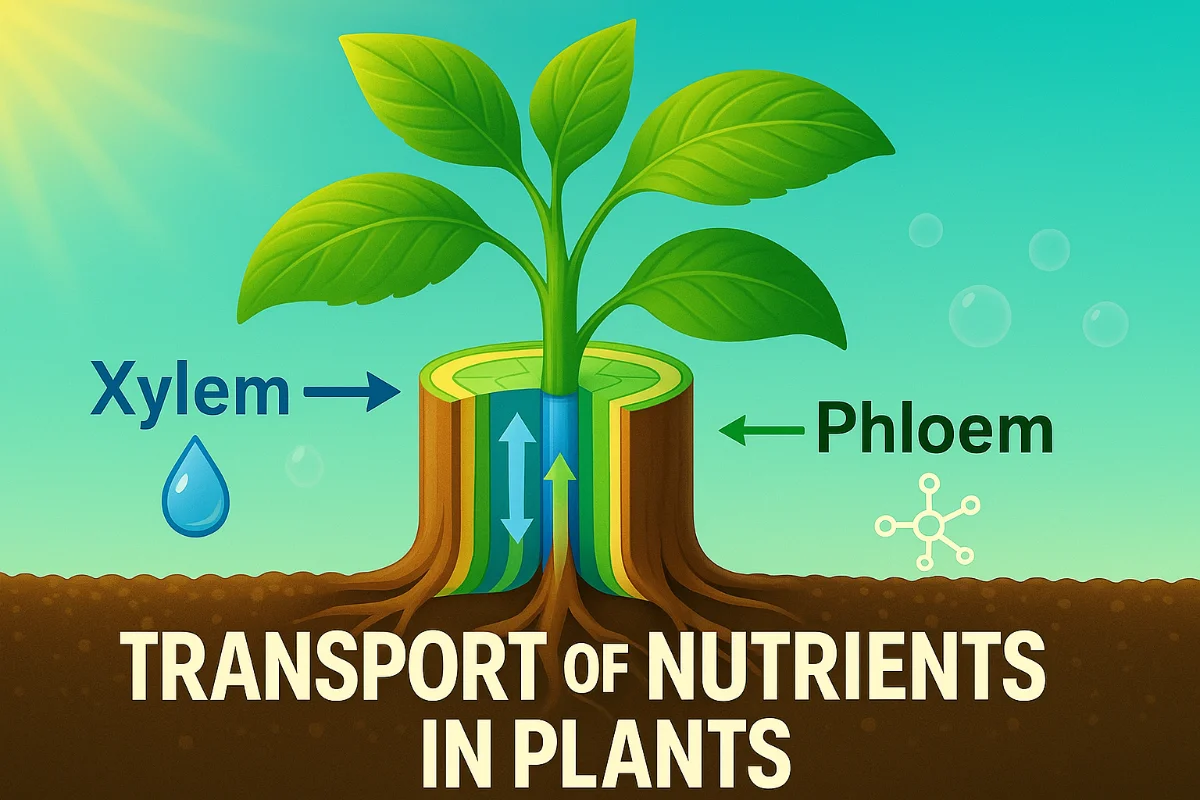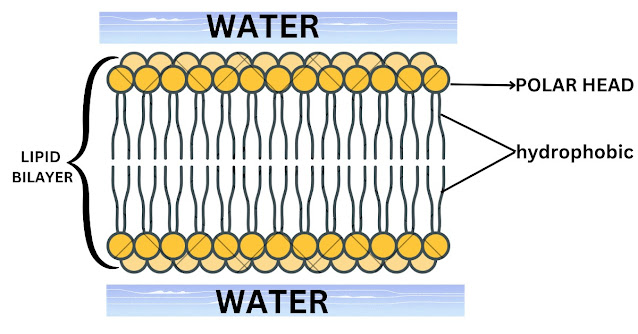Transport of Nutrients in Plants: The Lifeblood of Growth

Plants are incredible organisms, quietly performing complex processes to thrive in diverse environments. One of the most fascinating aspects of plant biology is the transport of nutrients in plants, a system that ensures they receive the essential substances needed for growth, reproduction, and survival. Just like our circulatory system delivers oxygen and nutrients throughout our bodies, plants rely on specialized tissues—xylem and phloem—to transport water, minerals, and sugars.
Table of Contents
What is the Transport of Nutrients in Plants?
At its core, the transport of nutrients in plants refers to the movement of essential substances—water, minerals, and organic compounds like sugars—throughout the plant to support its metabolic needs. Plants don’t have a heart to pump nutrients like animals do, yet they’ve evolved an efficient system to move materials over long distances, from roots buried deep in the soil to leaves reaching for sunlight. This process is vital for photosynthesis, growth, and reproduction, ensuring every part of the plant gets what it needs to function.
The transport system in plants primarily involves two types of vascular tissues: xylem and phloem. Xylem is responsible for carrying water and dissolved minerals from the roots to the leaves, while phloem distributes sugars and other organic compounds produced during photosynthesis to various parts of the plant. Together, these tissues form a network that allows plants to maintain their structure, produce energy, and adapt to their environment.
To understand the transport of nutrients in plants, think of xylem and phloem as the plant’s highways. Xylem is like a one-way road moving water and minerals upward, while phloem acts as a two-way street, distributing sugars and nutrients to where they’re needed most, whether it’s growing tips, fruits, or storage organs like roots. This dynamic system ensures plants can grow tall, produce vibrant flowers, and survive challenging conditions.
How Are Nutrients Transported in Plants?
The question How are nutrients transported in plants? gets to the heart of plant physiology. The process is driven by the coordinated efforts of xylem and phloem, each with distinct structures and mechanisms. Let’s break it down step by step to explain the process of transport of nutrients in plants.
Xylem: The Water and Mineral Highway
Xylem is a specialized tissue made up of dead, hollow cells that form long, tube-like structures. These cells, primarily tracheids and vessel elements, are designed to transport water and dissolved minerals absorbed from the soil. The journey begins in the roots, where tiny root hairs increase the surface area for absorption. Water and minerals, such as nitrogen, phosphorus, and potassium, enter the roots through osmosis and active transport.
Once inside the root, these substances move into the xylem and are transported upward through the plant. This movement is driven by a combination of forces:
- Root Pressure: At night or in humid conditions, roots actively pump minerals into the xylem, creating a pressure that pushes water upward. This is particularly important in smaller plants or during periods of low transpiration.
- Transpiration Pull: The primary force behind xylem transport is transpiration, the evaporation of water from the leaves. As water evaporates from tiny pores called stomata, it creates a negative pressure (or tension) that pulls more water up from the roots. This process, known as the cohesion-tension theory, relies on the cohesive properties of water molecules, which stick together and form a continuous column in the xylem.
- Capillary Action: In very small plants, the adhesive properties of water (its ability to stick to the walls of xylem vessels) can help move water upward through narrow tubes.
The xylem’s role in the transport of nutrients in plants is critical because water is not just a solvent—it’s a medium that carries essential minerals to every cell. Without this system, leaves wouldn’t have the raw materials needed for photosynthesis, and the plant would struggle to survive.
Phloem: The Sugar Superhighway
While xylem handles water and minerals, phloem is responsible for transporting organic compounds, primarily sugars produced during photosynthesis. Phloem is made up of living cells, including sieve tube elements and companion cells, which work together to move nutrients efficiently.
The process of phloem transport is called translocation, and it follows a fascinating mechanism known as the pressure-flow hypothesis:
- Loading Sugars: In the leaves, where photosynthesis occurs, sugars (mainly sucrose) are produced in the chloroplasts. These sugars are actively transported into the phloem’s sieve tubes by companion cells, creating a high concentration of sugar at the source (usually the leaves).
- Creating Pressure: The high sugar concentration in the phloem draws water into the sieve tubes via osmosis, increasing pressure in the phloem at the source.
- Flow to Sink: This pressure pushes the sugar-rich sap through the phloem to areas of lower pressure, known as sinks. Sinks can be growing tissues (like new leaves or roots), storage organs (like tubers or bulbs), or reproductive structures (like fruits and seeds).
- Unloading Sugars: At the sink, sugars are actively or passively unloaded from the phloem, reducing the pressure and allowing the sap to continue flowing.
Unlike xylem, which moves in one direction (upward), phloem transport is bidirectional, allowing nutrients to flow to wherever they’re needed most. This flexibility is crucial for the transport of nutrients in plants, as it ensures growing tissues and storage organs receive the energy they need to develop.
What Helps to Transport Nutrients in a Plant?
The question What helps to transport nutrients in a plant? highlights the structures, mechanisms, and environmental factors that make this process possible. Beyond xylem and phloem, several components and conditions play a role in ensuring nutrients reach their destinations.
Key Structures in Nutrient Transport
- Root Hairs: These tiny extensions of root cells increase the surface area for absorbing water and minerals from the soil. They’re the starting point for nutrient uptake and are critical for the transport of nutrients in plants.
- Vascular Tissues: As mentioned, xylem and phloem are the primary conduits for nutrient transport. Their specialized cells—tracheids and vessel elements in xylem, sieve tubes and companion cells in phloem—are designed for efficiency and durability.
- Stomata: These microscopic pores on leaves regulate transpiration, which drives the movement of water and minerals through the xylem. By opening and closing, stomata control water loss and maintain the pressure needed for transport.
- Casparian Strip: Found in the roots, this waxy layer forces water and minerals to pass through cell membranes, allowing the plant to selectively absorb nutrients and filter out harmful substances.
Mechanisms Driving Transport
- Transpiration: The evaporation of water from leaves creates the pull that drives xylem transport. This process is influenced by environmental factors like humidity, temperature, and wind.
- Active Transport: In both xylem and phloem, cells use energy (in the form of ATP) to actively move substances against concentration gradients. For example, companion cells in the phloem use active transport to load sugars into sieve tubes.
- Osmosis: The movement of water across cell membranes due to differences in solute concentration is critical for both xylem and phloem transport.
- Cohesion and Adhesion: In xylem, water molecules stick together (cohesion) and to the walls of xylem vessels (adhesion), allowing them to be pulled upward without breaking the water column.
Environmental Factors
The transport of nutrients in plants is also influenced by external conditions:
- Soil Conditions: The availability of water and minerals in the soil directly affects nutrient uptake. Poor soil quality or drought can limit the transport process.
- Temperature and Humidity: These factors influence transpiration rates, which in turn affect xylem transport. High humidity slows transpiration, while hot, dry conditions speed it up.
- Light: Photosynthesis, which produces sugars for phloem transport, depends on light. More light generally means more sugar production and increased phloem activity.
Why is Nutrient Transport Important?
The transport of nutrients in plants is the backbone of their survival and growth. Without it, plants couldn’t perform essential functions like:
- Photosynthesis: Water and minerals transported by xylem are critical for producing sugars in the leaves.
- Growth and Development: Sugars and nutrients delivered by phloem support the growth of new leaves, stems, roots, and reproductive structures.
- Storage: Plants store excess sugars in roots, tubers, or fruits, which are transported via phloem. This stored energy helps plants survive periods of dormancy or stress.
- Defense: Nutrients are used to produce secondary metabolites, like toxins or pigments, that protect plants from pests and environmental stress.
When nutrient transport is disrupted—due to drought, disease, or physical damage—plants can wilt, stop growing, or even die. Understanding this process helps gardeners, farmers, and scientists optimize plant health and productivity.
Challenges to Nutrient Transport
While plants have evolved an efficient system for the transport of nutrients in plants, they face challenges that can disrupt this process:
- Drought: Lack of water reduces transpiration and root pressure, slowing xylem transport.
- Nutrient Deficiencies: Poor soil quality can limit the availability of essential minerals, affecting plant health.
- Pests and Diseases: Insects like aphids feed on phloem sap, while pathogens can clog xylem or phloem vessels, disrupting transport.
- Physical Damage: Cuts or breaks in stems can sever vascular tissues, halting nutrient flow to affected areas.
Gardeners and farmers can address these challenges by ensuring proper irrigation, using fertilizers, and protecting plants from pests and diseases.
Fun Facts About Plant Nutrient Transport
To wrap up, here are some fascinating tidbits about the transport of nutrients in plants to spark curiosity:
- Tall Trees Defy Gravity: Giant redwoods, some over 300 feet tall, rely on transpiration and cohesion to transport water from their roots to their highest leaves—an incredible feat!
- Phloem is a Target for Pests: Aphids tap into phloem to steal sugary sap, which is why they’re often found on the undersides of leaves.
- Xylem Can Repair Itself: Some plants can form new xylem vessels to bypass damaged ones, ensuring water transport continues.
- Transpiration is Massive: A single large tree can transpire hundreds of gallons of water per day, driving the movement of nutrients through the xylem.
FAQs About Transport of Nutrients in Plants
- What is the transport of nutrients in plants?
The transport of nutrients in plants involves moving water, minerals, and sugars through xylem and phloem to support growth, photosynthesis, and survival. Xylem carries water and minerals from roots to leaves, while phloem distributes sugars to various parts of the plant. - How are nutrients transported in plants?
Nutrients are transported through xylem and phloem. Xylem moves water and minerals upward using transpiration pull, root pressure, and capillary action. Phloem transports sugars via translocation, driven by the pressure-flow mechanism, from leaves to growing or storage tissues. - What helps to transport nutrients in a plant?
Root hairs, xylem, phloem, stomata, and the Casparian strip aid nutrient transport. Mechanisms like transpiration, active transport, osmosis, and cohesion-adhesion, along with environmental factors like soil quality, temperature, and light, support the process. - Can you explain the process of transport of nutrients in plants?
The transport of nutrients in plants involves xylem moving water and minerals from roots to leaves via transpiration pull, root pressure, and capillary action. Phloem transports sugars from leaves to other parts through translocation, driven by the pressure-flow mechanism, ensuring plants get the nutrients needed for growth and survival.
Visit my blog : Rajkumar Logre . Any Query and Suggestion Tall Me : Rajkumar Logre






